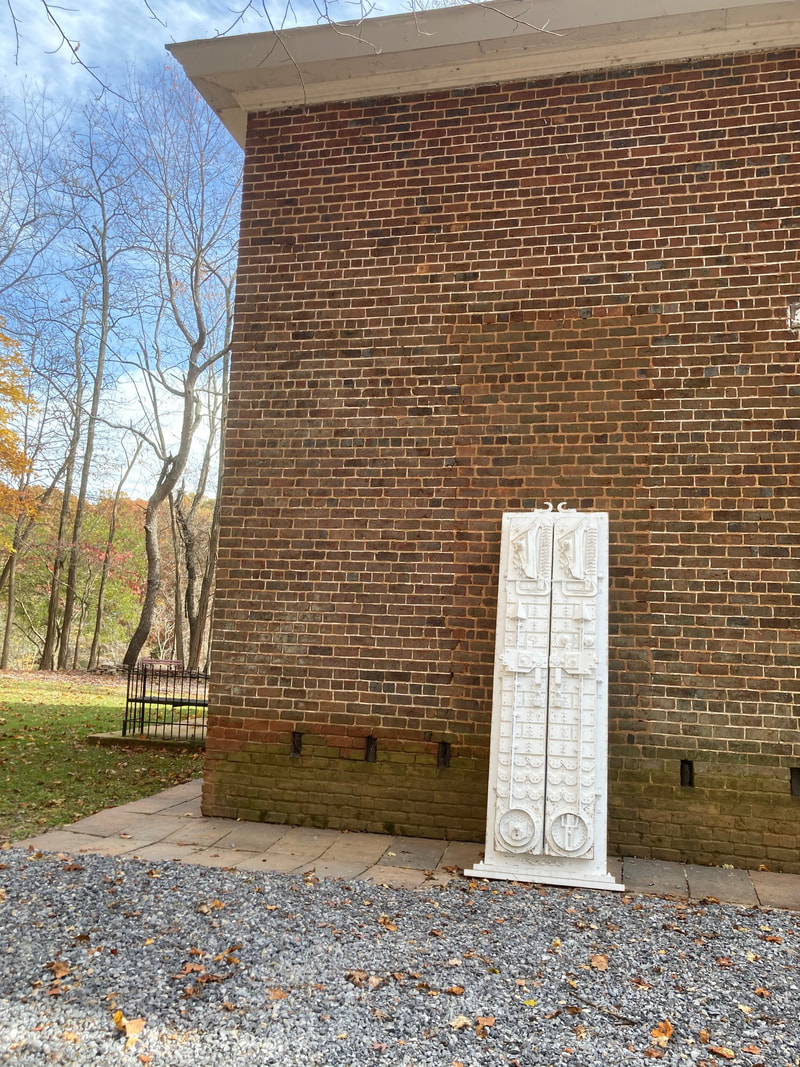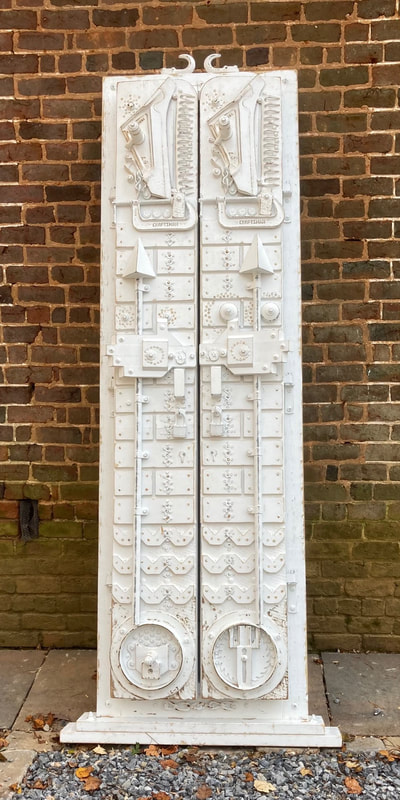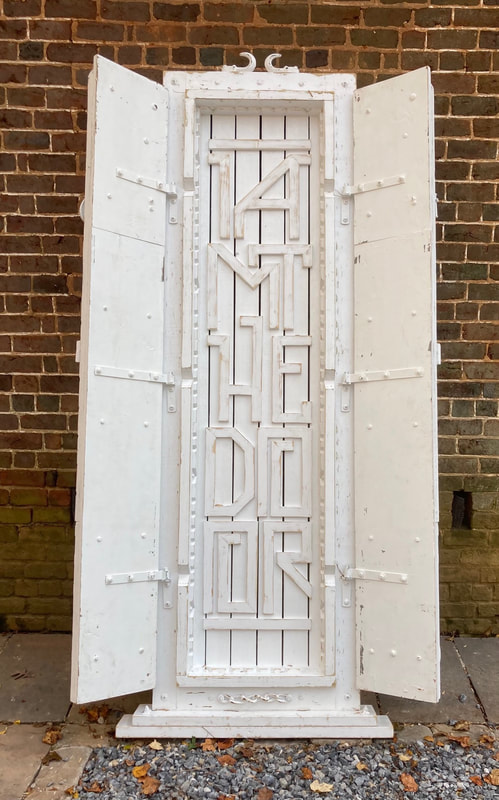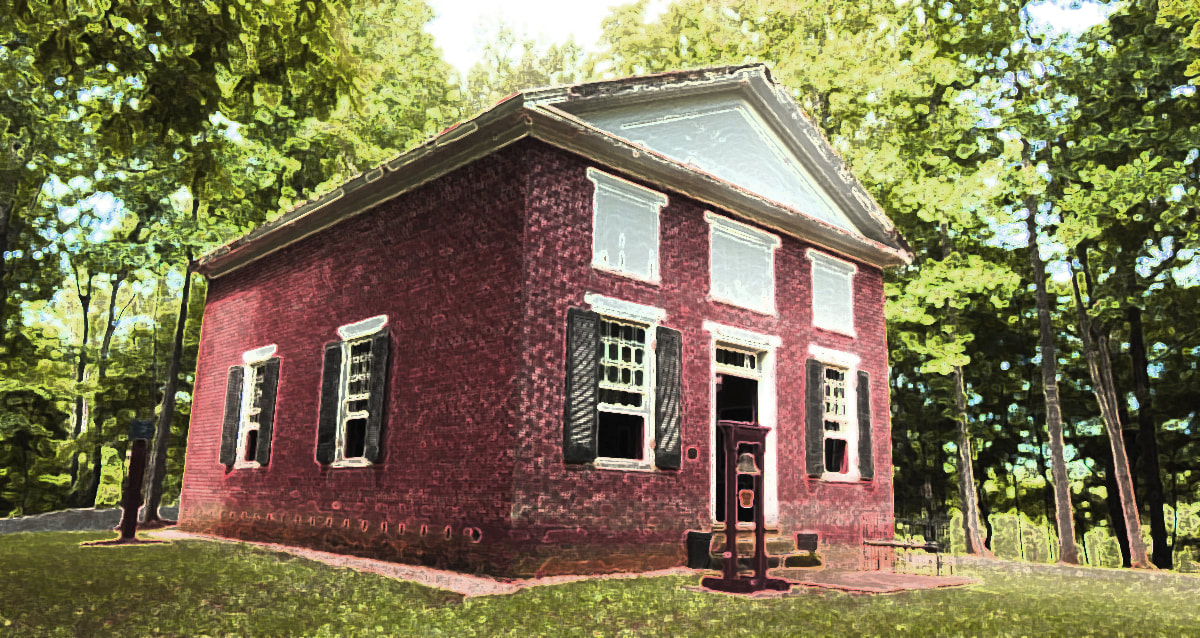I am the door.
Whoever enters by me will be saved
and will come in and go out and find pasture.
The thief comes only to steal and kill and destroy.
I came that all may have life and have it abundantly.
Jesus of Nazareth
Sometimes we must look deep into beauty to discover how it deceives.
Thomas Chapel was born amid profound theological and social disagreement. In the decades before the Civil War, there was no greater theological or moral issue at the center of Methodist debate and life than the question of the enslaved person in the life of the church. In 1844, the year that the building of Thomas Chapel was approved, the Methodist Church would split governance between the northern and southern states. The founders of Thomas Chapel built a beautiful shrine to the southern religious ideology.
Thomas Chapel (Methodist Episcopal Church South) still bears the scars of these past decisions … long after the local community grew in greater alignment with the gospel message. The Greek temple form, the grandeur and seeming permanence, the elegant building materials, and even chapel’s location high on a hill were meant to communicate how the world was to be ordered under God’s care. This building was a considerable investment of time, labor, and resources in what was to be future of the church in the southern states. This house of God would forever be segregated, hierarchical, and ordered according to what the founders believed to be God’s great design for humanity. Differences in race, gender, education, wealth, clerical status is made clear in in the architecture of this building, the layout of the seating and furnishings, and the polity of the chapel’s governance.
Sometimes institutional religion gets it so very wrong … and God cries in anguish.
The Jewish scholar and civil right activist Abraham Joshua Heschel says that the responsibility of the prophetic/creative imagination is mysteriously centered in communicating that divine anguish back to humanity with words and actions and imagery that will “wake-up” humanity to return to the fullness of God’s hope for creation.
The two site-specific works I created for the feast of Samhain, seek to give visual expression to the divine anguish of Thomas Chapel’s earliest years. My work is not intended as judgement on the complexity of life in this community nearly two centuries ago. This topic captures my imagination because this story has profound echoes of our current struggles within society … and the church … over issues of inclusion/exclusion and hierarchy. Like the small groups of believers in Thaxton two centuries ago, we are making choices today about who is in … and who is out … who has life … and who has it abundantly.
I sense that God’s anguish is as deep today as it was two centuries ago.
Both new works are totem assemblages. Totems are a way of storytelling in primal and first nation religious traditions. Totems, like all symbolic systems are implosive, and therefore must be experience from within. They are not a window for the viewer to look in to find understanding. Rather, totems are windows looking out to the world. The viewer must come prepared to get inside the narrative and see life through the identity, morality, and a cosmology of a particular people and a particular place.
The Buddha says that within suffering itself, there is no separation between my suffering and another’s suffering. My intention with these assemblages is to look out the window of the narrative of the enslaved builders and members of Thomas Chapel to explore our current divisions … to see beyond our current injustices … and to hopefully find a path forward.
Totems are often abstracted to include only the elements that are central to the story and therefore require a storyteller to set the context … and an accompanying communal religious ritual to embody the narrative. Thus … these totems are only part of our Samhain celebration and must be understood in the broader context of storytelling and the ritual of the evening prayer. Totems are rarely intended to be permanent things … but rather consumed by the forces of nature and time … just as people and places are.
I craft my totems from things that that have been tossed away or are no longer useful such as discarded tools or components to machinery that are now obsolete. I like that these objects have been previously used in the work of others, in the work of human progress, and certainly in the work of building the Kingdom of God on earth.
I AM THE DOOR & CEMETERY ANGEL
In accordance with Methodist practice at the time, both free and enslaved members of the congregation worshiped together, but the enslaved members had segregated seating in “the negro pews” in the back … or most commonly, in a balcony accessed through a small side door. These enslaved church members would have no exemption from being sold by their owners as other slaves were.
Local legend, and certainly pragmatism, suggests that enslaved peoples worked to construct the chapel … notably making the bricks for the chapel. Local slave records indicate that six of the seven founding fathers counted nearly 100 slaves between themselves. Like so much of the county’s early infrastructure, Thomas Chapel would not have been possible without the skill and toil of enslaved people. At this time, 42 percent of the county’s inhabitants were enslaved … so we can assume that these percentages were reflected in the local community that surrounded the chapel.
After the war, the Methodist church would split into many separate denominations largely based on race or issues of congregational polity. It is unlikely that Thomas Chapel had black members after these post war denominational shifts.
| I AM THE DOOR is an homage to the work and skill of the chapel’s enslaved builders and craftsman. The sculpture is placed in the “ghost” created by the bricked-in slave door … one of the most visible scars of the chapel’s founding ideology … to become a mystical entrance to this renewed house of prayer. This “jagged” door stands in sharp contrast to the chapel’s western classicism. The assemblage seeks to capture both the human horror and theological blasphemy of this moment in time … as well as celebrate the strength and resilience of a people whose voices were silenced … whose stories are lost … and yet somehow still clung to an eschatological hope in a God who offers abundant life to all … while living amongst a people who did not. |
| CEMETERY ANGEL is simply a marker for memento mori … for all the unnamed members and builders of Thomas Chapel … both free and enslaved … whose work and craftsmanship created a thing of beauty … and whose life and skills are largely unrecorded. This angel is a guardian and a reminder that there are souls resting in this soil … facing east and awaiting the rising sun … chains broken … ready to fly … awaiting a new heaven and a new earth … where sorrow and sighing will be no more … and every tear will be wiped away. Patrick Ellis, October 2022 |






 RSS Feed
RSS Feed